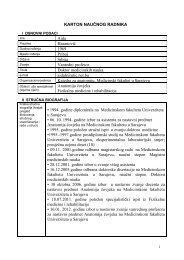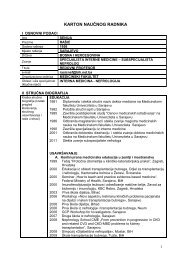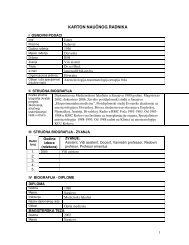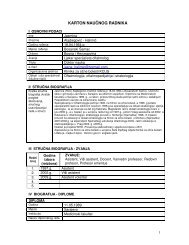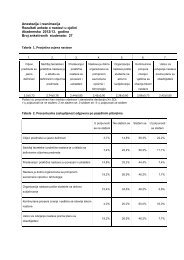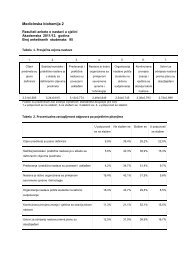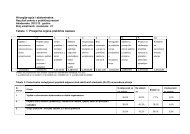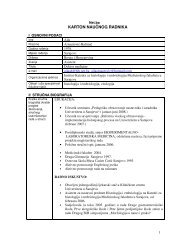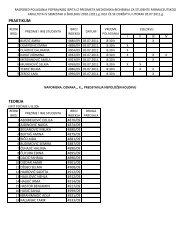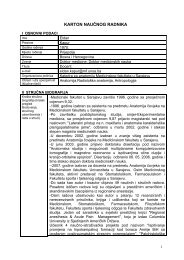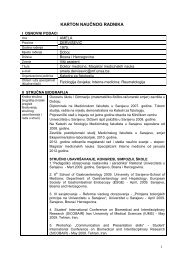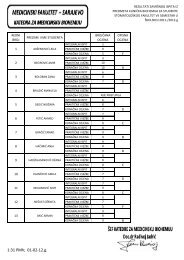Contents - Medicinski Fakultet u Sarajevu - University of Sarajevo
Contents - Medicinski Fakultet u Sarajevu - University of Sarajevo
Contents - Medicinski Fakultet u Sarajevu - University of Sarajevo
- No tags were found...
You also want an ePaper? Increase the reach of your titles
YUMPU automatically turns print PDFs into web optimized ePapers that Google loves.
Oral presentationBREAST CANCER–TODAY AND TOMORROWZerina JašarevicInstitute <strong>of</strong> Pathology,<strong>University</strong> Hospital Feldkirch,6800 Feldkirch, AustriaE-mail: Zerina.Jasarevic@lkhf.atThe incidence <strong>of</strong> breast cancer in Austria has been increasinglast 10 years by 38%, however, mortality at thesame being reduced by 25%. Between 6 and 10% <strong>of</strong>breast cancers are metastatic at the time <strong>of</strong> first diagnosis.The breast cancer arises as a product <strong>of</strong> interaction<strong>of</strong> multiple factors, nowadays classified into twogroups: gene-environment and gene-gene interactions.The classical clinical and pathological parameters are,especially in early stages <strong>of</strong> the disease, insufficient regardingthe therapeutical choices and prognosis, <strong>of</strong>tenassociated with side effects and high costs.The pathological prognostic parameters (type, size,grade, angioinvasion, lymph node status, ER, PR andHER-2 status) and other prognostic system (NPI and StGallen consensus) are more and more frequently completedwith novel molecular tests. The latter includedDNA microarray method (Amsterdam signature or“Mammaprint” and RT-PCR method or Oncotyp Dx).The significance <strong>of</strong> those tests in clinical practice is beingtested through a number <strong>of</strong> large international studies(MINDACT and TAYLOR X). Some <strong>of</strong> the methodsare expected to become an important part <strong>of</strong> standardprocedures in an attempt to gather better and wider informationabout tumor biology and tumor sensitivityto therapy. It is becoming apparent the good correlation<strong>of</strong> molecular and genetic results with clinical parametersand their supportive role in diagnostics.The main goal <strong>of</strong> clinical studies and so-called translationalresearch worldwide is an early detection <strong>of</strong> thegroup <strong>of</strong> about 30% <strong>of</strong> breast cancer patients expectedto die <strong>of</strong> disease and their distinction against the rest <strong>of</strong>the patients surviving the disease, measured against today’sstandards. The significance <strong>of</strong> such developmentlies most importantly in identification and distinctionbetween two groups <strong>of</strong> patients, those responding andthose not responding to the chemotherapy and targettherapy.25



